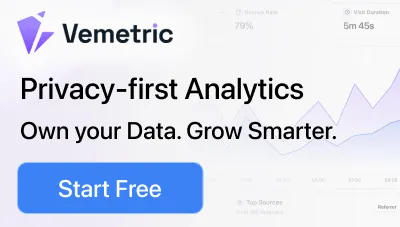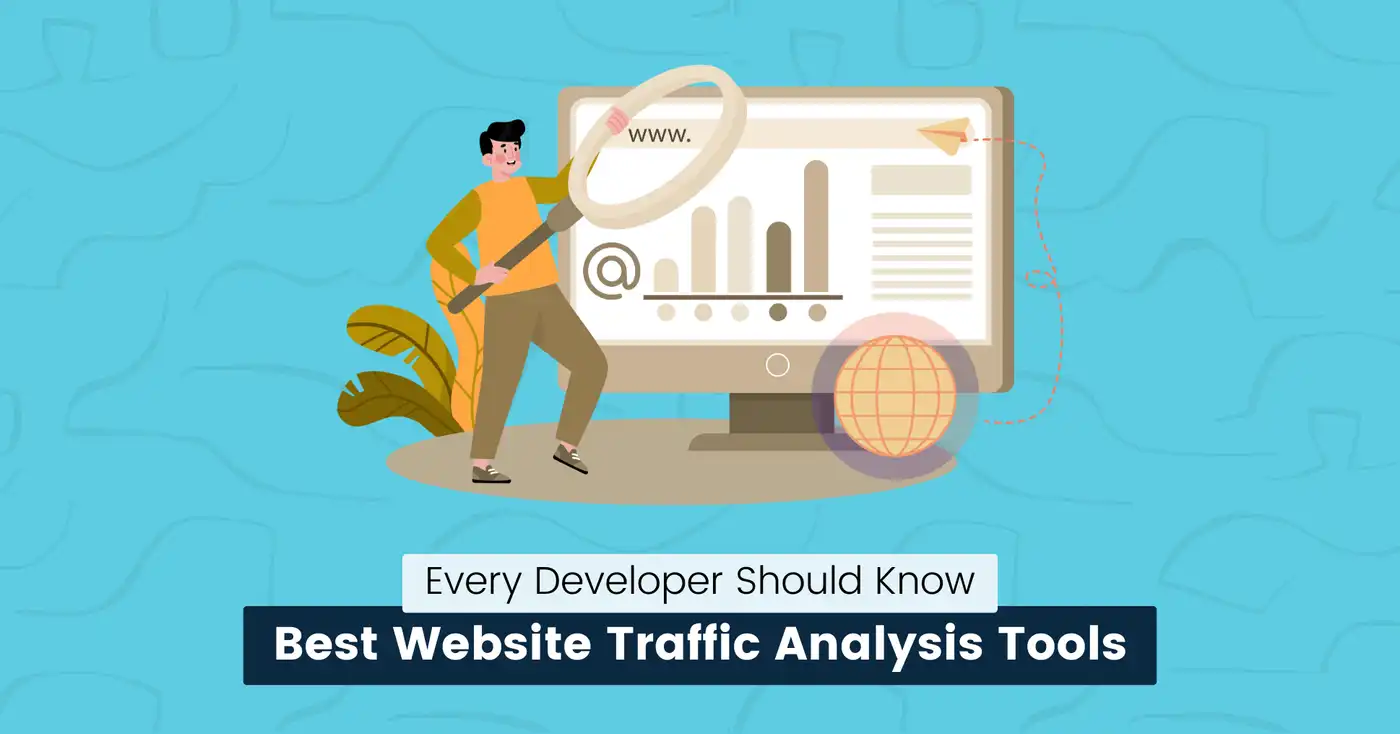
7 Best Website Traffic Analysis Tools (2025)
Imagine pouring hours into content or ads but not knowing if they work.
Your website or online business will fail if you do not conduct accurate internet traffic and brand competition analysis.
You’ll get stuck, unable to fix slow pages, detect traffic drops, or see where visitors come from while ignoring pages they love.
That’s where website traffic analysis tools come in.
These tools show you how visitors find and engage with your content.
Knowing what works and what doesn’t allows you to gain valuable insights about visitor behavior, monitor growth in real time, and optimize your website’s performance.
This guide will help you learn about the top website traffic analysis tools, including their key features and pricing, to find the best one for your business.
Whether you run a blog, an e-commerce site, or a SaaS platform, these tools can help you identify weak points and evaluate essential metrics to turn raw data into actionable steps.
Let’s get started.
What is the Purpose of Website Traffic Analysis?
Website traffic analysis is the process of collecting and interpreting data about visitors to your website.
Traffic analysis tools examine how users interact with your websites and display estimated information on key performance indicators (KPIs).
Such as:
- Page Views: Total visits to a page on your site. It helps identify popular content or underperforming pages.
- Traffic Volume: Shows the number of new and returning users to your website and their demographics.
- Traffic Sources: Where your visitors come from (organic search, paid ads, social media). Reveals which channels deliver organic traffic.
- Bounce Rate: Percentage of visitors who leave after viewing one page. High rates signal irrelevant content or poor user experience.
- Session Duration: Time spent per visit. Longer sessions often mean engaging content, while short ones suggest mismatched audience or usability issues.
- Conversion Rate: Percentage of visitors completing goals such as purchases or sign-ups.
- Exit Pages: Shows where users leave your site and help identify friction points (e.g., checkout errors).
- Device/Browser Data: Identifies whether users are on mobile, desktop, or tablets. This helps prevent compatibility issues, such as mobile users struggling with desktop-optimized pages.
Benefits of Website Traffic Analysis
Traffic data indicates where your website is functioning well and where it needs to be improved.
It also helps you personalize your content strategy to meet the needs of your target audience and remain competitive in the industry.
Here are the main benefits of using traffic analytics:
Improve User Experience
- Fix broken links or speed up slow pages.
- Simplify navigation based on real user behavior.
- Rethink weak content strategy.
- Detect drop-off areas within conversion funnels.
Optimize Marketing Spend
- Stop wasting budgets on unproductive channels.
- Double down on campaigns that drive conversions.
Increase Conversions
- Use heatmaps or session recordings to see why users abandon carts.
- Adjust layouts, CTAs, or forms to reduce drop-offs.
Search Engine Optimization (SEO) Ranking
- Learn which keywords your competitors rank for.
- Check how your visibility is affected by algorithm changes.
- Catch technical issues like traffic drops from SEO penalties early.
Benchmark Performance
- Understand which channels attract the most visitors.
- Compare your metrics against industry standards to assess progress and set realistic goals.
Top 7 Website Traffic Analysis Tools
Here’s a list of the best tools for website traffic analysis, along with their key features and pricing to help you decide.
Vemetric
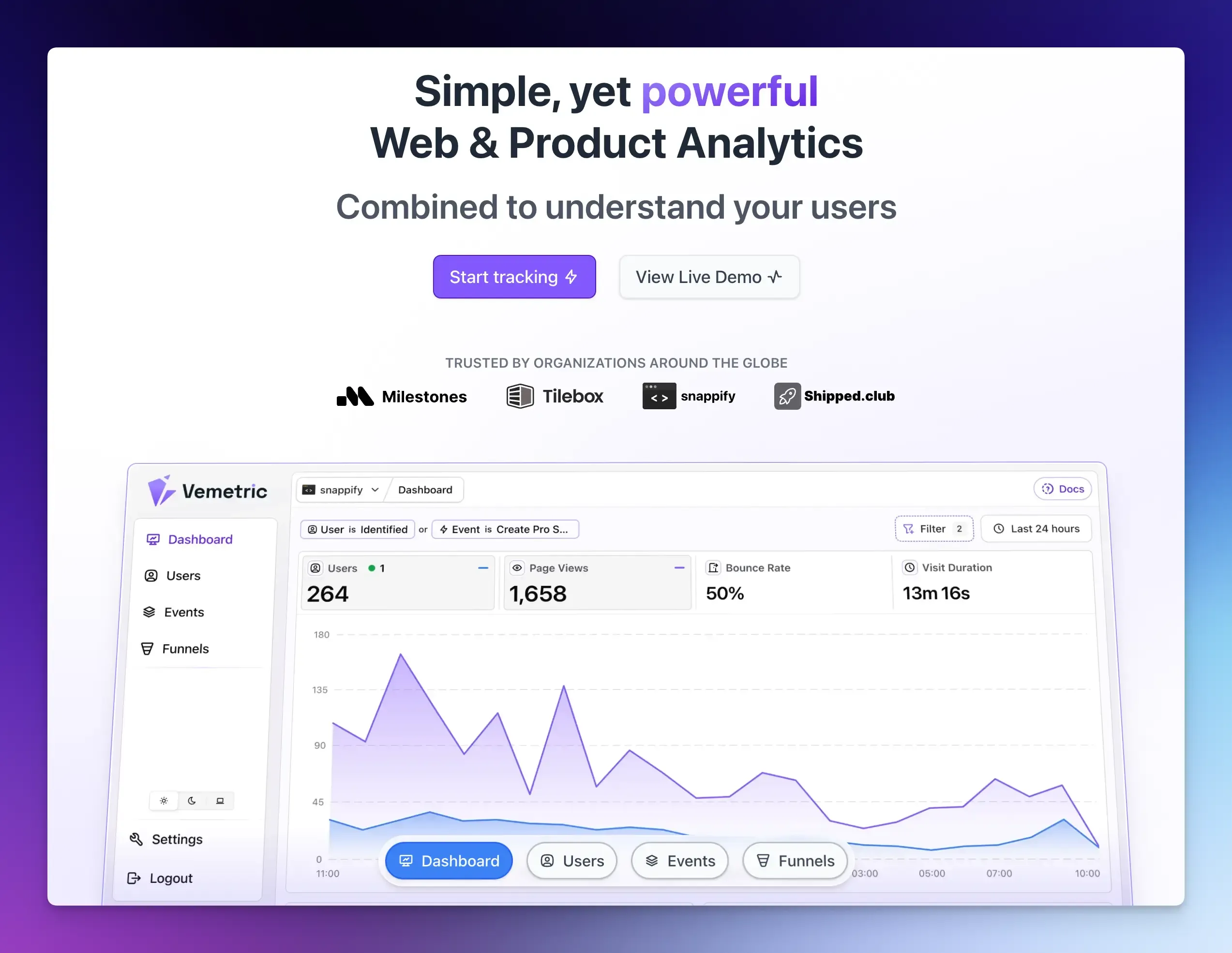
Vemetric is a privacy-focused product analytics platform that combines web analytics with user journey tracking to help you understand user behavior in real-time.
It is a powerful tool that offers useful insights about how visitors act on your website and how to utilize that information to make data-driven decisions to improve their experience.
Key Features:
- Real-Time User Tracking: View active users, their current pages, and actions as they happen.
- User Journey Mapping: Track individual paths across devices and sessions, merging anonymous and identified activity to reveal drop-off points or engagement patterns.
- Built-In Web Analytics: Monitor traffic sources, page views, session duration, top-performing pages, and referral channels.
- Event Logging: Track custom events like button clicks or video plays to analyze user interactions.
- GDPR Compliance: No cookies by default. It uses a daily rotating hash for visitor identification. There is optional cookie support for recurring tracking.
Pricing:
- Free plan available (2,500 events).
- Pricing starts from $5 per month (10,000 events).
Google Analytics

Google Analytics (GA4) is a free, privacy-focused tool for tracking user behavior across websites and apps.
It is an all-purpose analytics platform that offers comprehensive traffic data by installing a tracking code on your website to collect information on user interactions, traffic sources, and conversions.
Key Features:
- Event-Based Tracking: Automatically records user interactions as events.
- Cross-Platform Insights: Track users across websites, mobile apps, and offline sources in one dashboard.
- Predictive Analytics: GA4 uses machine learning to forecast metrics like purchase probability or churn risk.
- Integrations: Integrates with other Google products like Google Ads and Search Console.
- Enhanced Reporting: Customizable dashboards and exploration tools for deeper data analysis.
Pros:
- Free for most users.
- In-depth user journey tracking across devices.
Cons:
- Learning curve for non-technical users.
- Limited support for B2B account-level insights.
Pricing: Free
Semrush Traffic Analytics
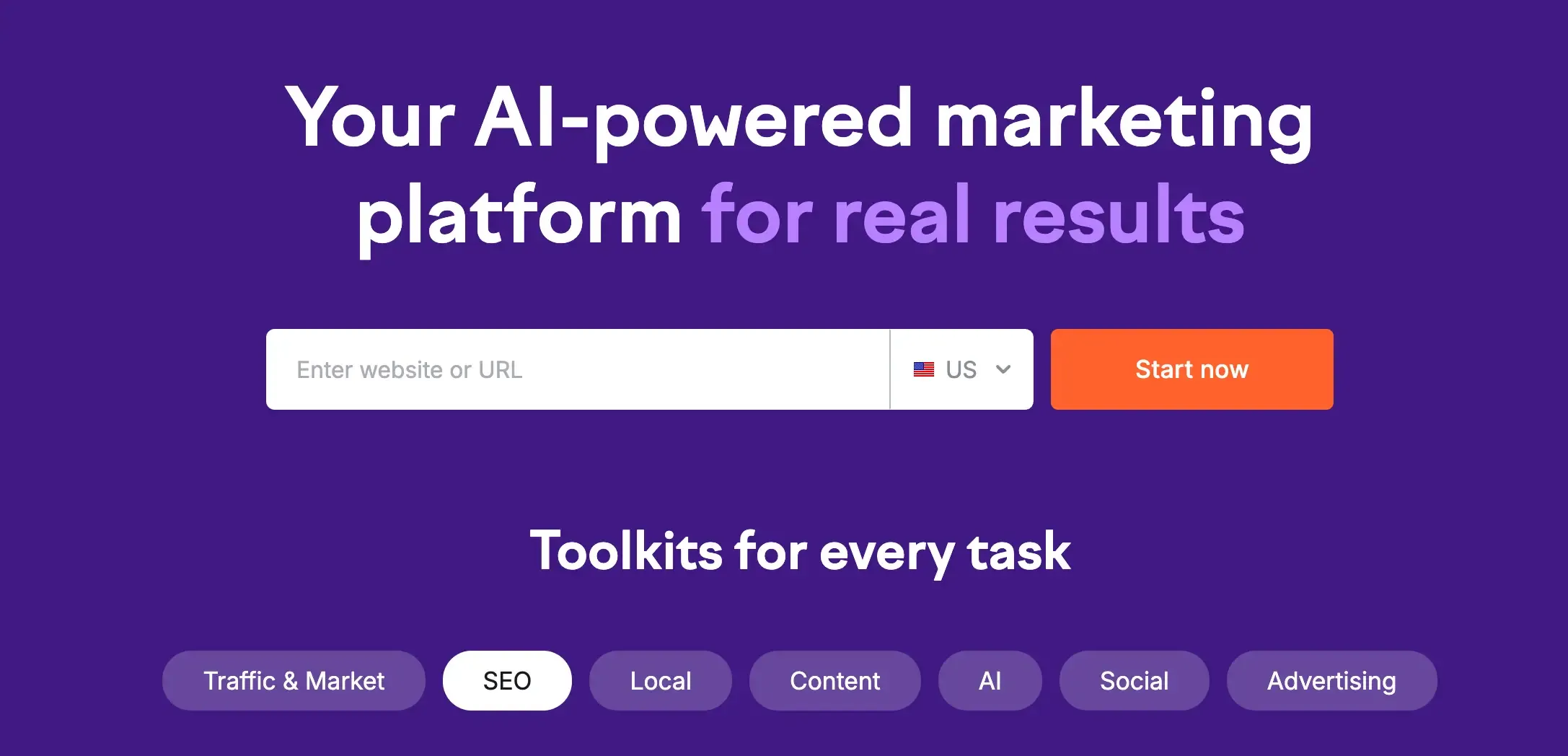
Semrush ****is an all-in-one SEO and digital marketing platform specializing in competitor analysis, keyword research, and website traffic insights.
While it’s best known for SEO, its traffic analytics tool helps businesses benchmark their performance against competitors and optimize their strategies.
Key Features:
- Competitor Traffic Analysis: View any website’s approximate monthly traffic volume, sources, and popular pages.
- Keyword Ranking: Monitor keywords driving traffic to your or competitors’ sites.
- Backlink Analysis: Identify which websites link to competitors and their link quality.
- Traffic Source Breakdown: Analyze competitor traffic distribution (direct, referral, search, social).
- Audience Data: Find shared audiences between your site and competitors, including detailed demographics and other attributes for targeted campaigns.
Pros:
- Great for finding gaps in your SEO strategy vs. competitors.
- Integrates with Google Analytics for cross-channel insights.
Cons:
- Traffic estimates are modeled from third-party sources and may not be exact.
- It is expensive for startups and small businesses.
Pricing:
- Limited free access to traffic analytics.
- Pro plan starts from $139.95 per month.
snappify will help you to create
stunning presentations and videos.
Hotjar
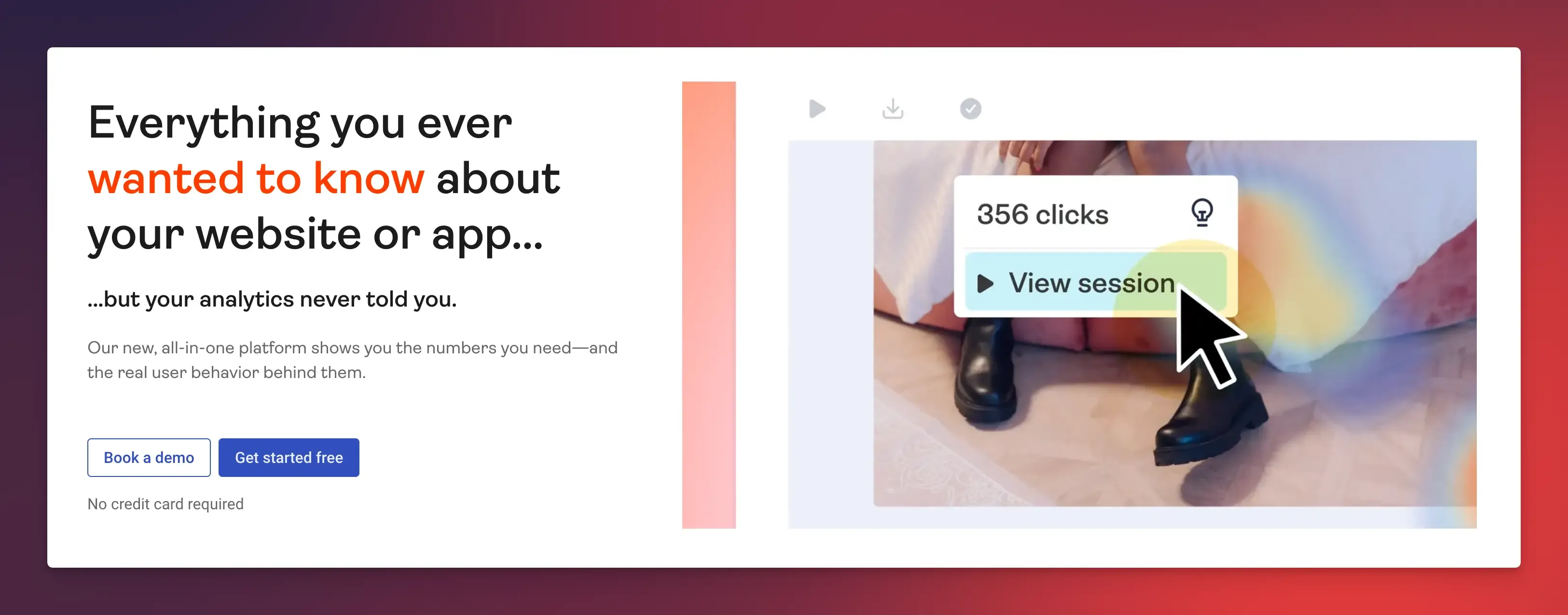
Hotjar is a user behavior analytics tool that combines heatmaps, session recordings, and surveys to show how visitors interact with your website.
Unlike traditional tools, it focuses on qualitative insights to reveal why users behave the way they do.
Key Features:
- Heatmaps: Visualize clicks, scrolls, and mouse movements to see which page elements attract attention or get ignored.
- Session Recordings: Watch replays of real user sessions to spot navigation issues or bugs.
- Conversion Funnels: Track drop-off points in key user journeys like checkout or sign-up.
- Form Analytics: Identify which form fields cause abandonment or errors.
- Integrations: Works with Google Analytics, Mixpanel, HubSpot, and Jira.
Pros:
- It is ideal for optimizing user experience (UX) and conversion rates.
- Affordable plans for small businesses.
Cons:
- Session recordings may require cookie consent banners in GDPR regions.
- No B2B-specific analytics.
Pricing:
- Free plan available.
- Pricing starts from $40 per month (billed annually).
Matomo
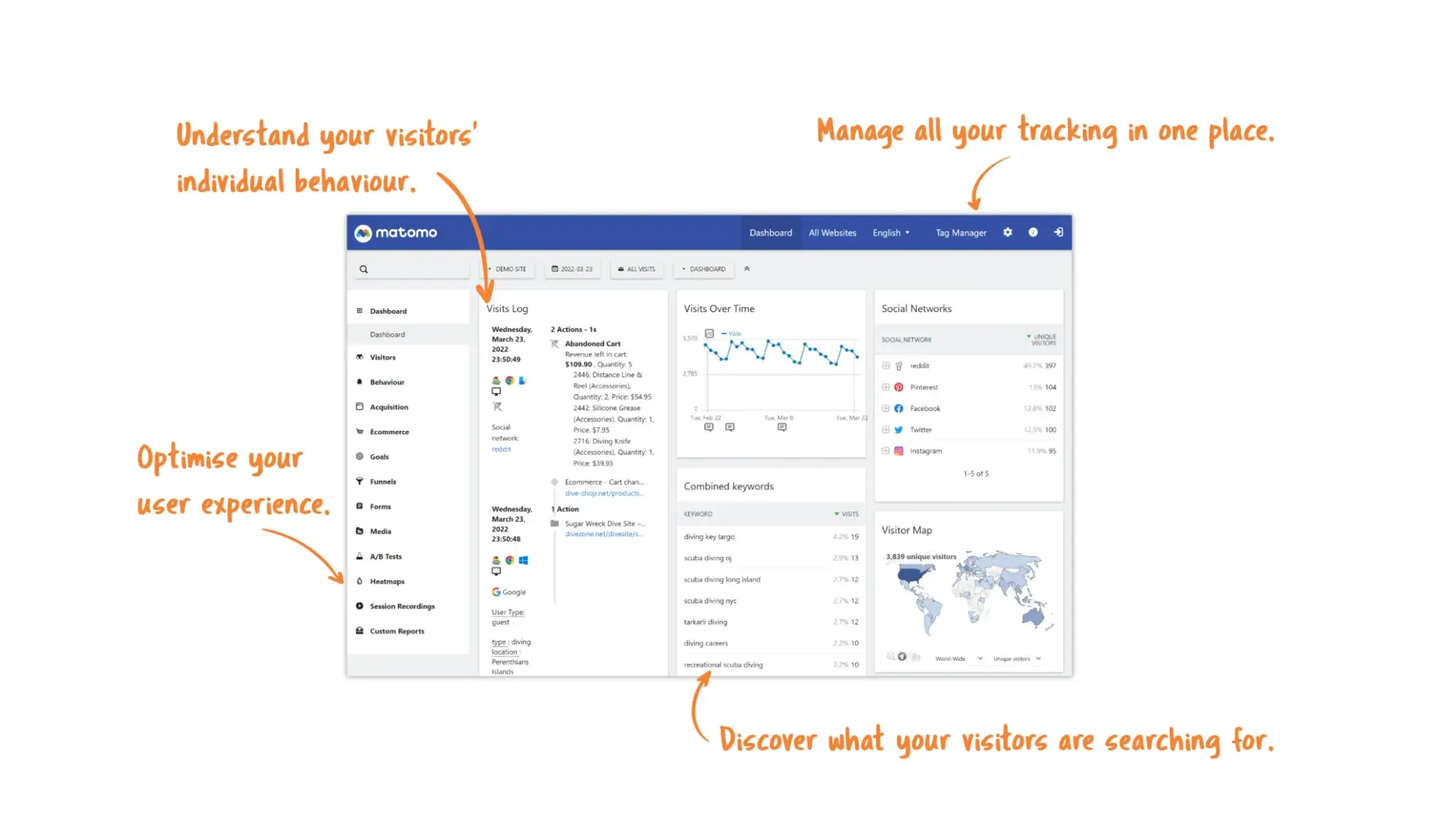
Matomo is an open-source web analytics platform that lets you self-host analytics data on your own servers.
It provides detailed traffic insights while prioritizing GDPR/CCPA compliance and user privacy.
Key Features:
- Cookieless Tracking: Optional cookieless mode to comply with privacy laws like GDPR.
- Heatmaps and Session Recordings: View user sessions and interactions to understand visitor behavior.
- Custom Dashboards: Create detailed custom reports with user engagement metrics, such as traffic sources, page views, and conversions.
- Real-Time Analytics: Monitor active visitors, live page views, and goal completions.
- SEO & Performance Audits: Check page load speeds, broken links, and keyword rankings.
Pros:
- Open-source and self-hosted options.
- Full data ownership (no third-party sharing).
Cons:
- Requires technical skills for self-hosting.
- Ad blockers can disrupt tracking.
Pricing: Free
Adobe Analytics
Adobe Analytics is an enterprise web analytics platform designed for large organizations that need deep, cross-channel insights into customer behavior and journey mapping at scale.
Key Features:
- Multi-Channel Attribution: Track user journeys across websites, apps, email, and offline interactions.
- Advanced Segmentation: Build custom audience segments using different variables.
- Real-Time Dashboards: Monitor live traffic, conversions, and campaign performance with instant updates.
- Predictive Analytics: AI-powered content insights and anomaly detection.
- Data Workbench: Explore raw data for custom queries and complex analysis.
- Privacy & Governance: Tools for GDPR/CCPA compliance, including data deletion and consent management.
Pros:
- Enterprise-grade scalability and customization.
- Integrates with Adobe Experience Cloud tools for advanced marketing optimization.
Cons:
- High price tag, not suitable for startups.
- A complex setup may require technical expertise.
Pricing: Available on request.
Plausible
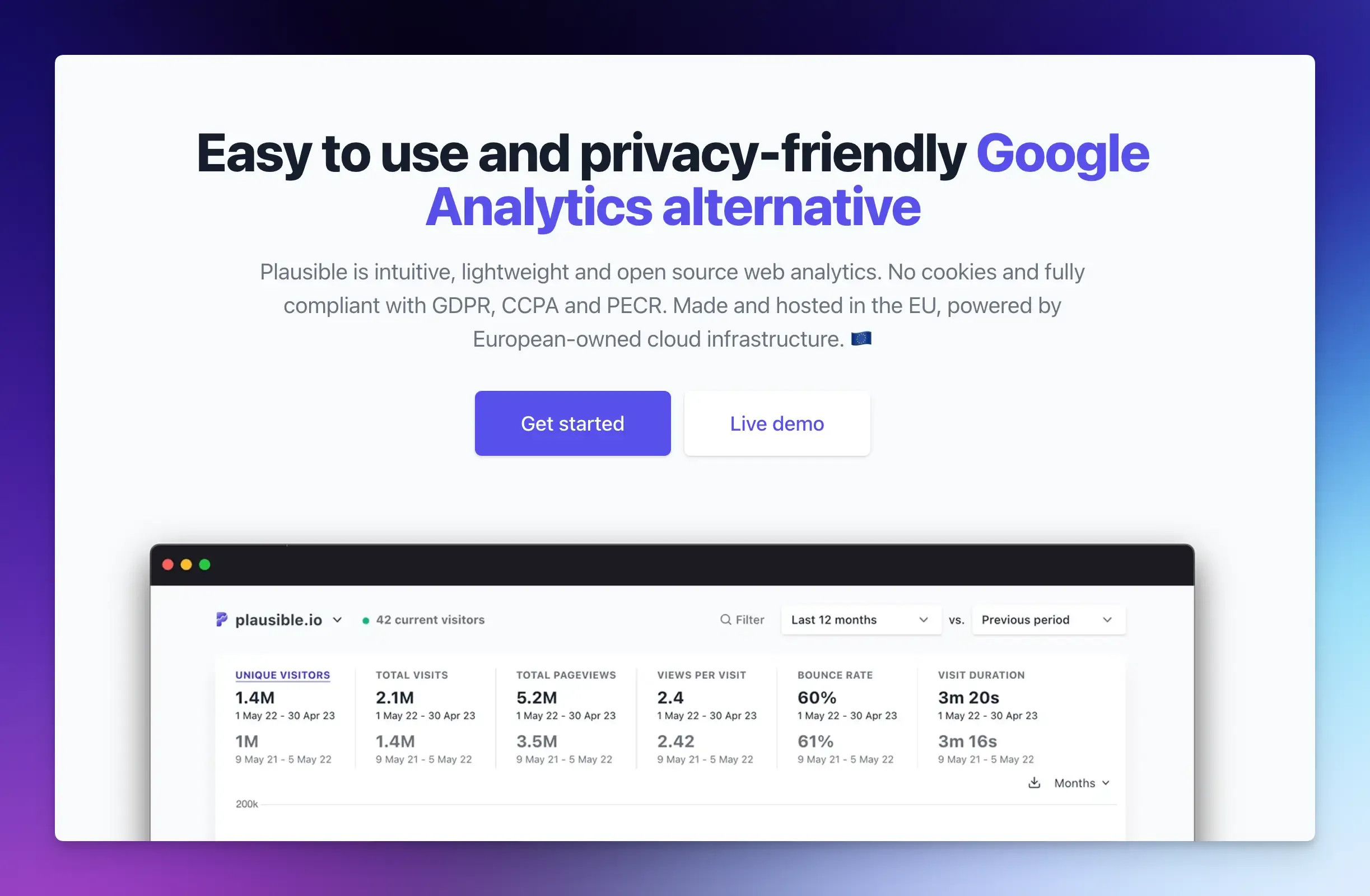
Plausible is a privacy-friendly, lightweight web analytics tool that provides essential traffic insights without compromising user privacy.
Key Features:
- No Cookies Required: Track visitors without cookies or invasive data collection.
- Real-Time Dashboards: Monitor live site activity, traffic, top pages, referral sources, and device types.
- Bot Filtering: Automatically excludes spam and bot traffic to focus on human visitors.
- Goal Conversions: Track custom goals without complex setups.
Pros:
- Very lightweight and easy to use.
- Open-source and GDPR/CCPA compliant.
Cons:
- It lacks advanced features like heat maps.
- Limited integrations compared to other tools.
Pricing:
- Free trial available.
- Pricing starts from $9 per month.
Final Words
A website traffic analysis tool isn’t just a nice to have, it’s a core tool for anyone serious about their online presence.
This guide mentioned some of the right tools available for website traffic analysis, including free and paid plans.
Consider your marketing strategies and goals to determine which tool is good for you, whether you’re looking for general traffic statistics or more detailed information on specific visitors and accounts.
FAQs:
Can website traffic analysis tools track anonymous visitors?
Many modern tools like Vemetric use cookie-free tracking and anonymized data hashing to monitor anonymous visitors without violating privacy laws.
Are there tools that combine traffic analysis with CRM data?
Platforms like HubSpot Analytics and Salespanel merge website traffic data with CRM insights. You can link visitor behavior to specific leads, track email campaign impacts, or score leads based on page visits and engagement.
